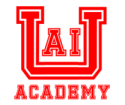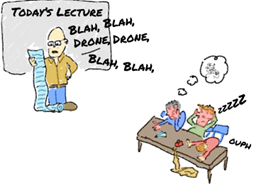
Viral Learning

 Like Guerrilla Marketing and Guerrila Warfare, Guerrilla Learning achieves rearkable results through unconventional, low-cost techniques.
At the heart of Guerrilla Learning is the concept of Viral Learning and organic growth driven by the user base.
Rather than a top-down learning program, Guerrilla learning is more effective as it's bottom-up.
Like Guerrilla Marketing and Guerrila Warfare, Guerrilla Learning achieves rearkable results through unconventional, low-cost techniques.
At the heart of Guerrilla Learning is the concept of Viral Learning and organic growth driven by the user base.
Rather than a top-down learning program, Guerrilla learning is more effective as it's bottom-up.It achieves this through The Extra Cheesy Rough Diamond model for micro-content and sharing
The 3 essential elements are:

Rough Diamond
The cartoons act as a 'rough diamond' - high quality, attractive and visual content that pulls people in.
The hand-drawn sketch approach demonstrates the author's investment of time, signalling the quality and inviting others to invest their time in reading them.
But the skectches are deliberately not perfect to encourage any readers to create and share their own and that it is open and allowed.
Counter-intuitively, learning content should not strive to appear perfect, authoritarian and 'the definitive word' on the subject as this discourages
further study, discussion and novel application of the content which fosters growth and innovation.

The Extra
The Mind Maps, Quick Quizzes, Communities and Connected Knowledge Networks are extra solid, proven ways for understanding and remembering the content. This drives
the creation of knowledge and changes behaviours through the application of new the information. By scaffolding the core content with
demonstrations of best practise for learning, you drive a learning culture through leading by example. These are transferable techniques that enhance
all formal learning programs and facilitate lifelong learning.

Cheesy
The limericks are the cheesy content that sets a low-bar for engaging with the content and sharing. It enlivens communities and encourages all to join in.
It disrupts the 90:9:1 model of online engagement growing the active contributors.
Lectures are boring!
 Lectures are boring!
Lectures are boring!
Viral Learning builds a learning culture and encourage lifelong learning.
Guerrilla Learning uses low-cost unconventional techniques to achieve incredible results,
dramatically out-performing standard formal approaches to workplace learning and
performance support.
It challenges the confirmational bias that hinders effective learning:
we have all been to school and college,
so we assume that we know how to learn and what works best.
However, our experience and our familar model of learning might not be the most effective and
efficient method to learn.
Delivering information and Learning Content are terms that are used interchangeably, they are very different things.
It is the same difference between informing and communicating - information is giving out, communication is getting through.
The information-dump style of teaching is not very effective and it assumes students are time-rich and have the freedom to
revisit material to make sense of it. This assumption is wrong because adults face more pressing demands on time
especially in the workplace - like project deadlines and family and social commitments. This means most
workplace learning is superficial, quickly forgotten and doesn't develop into knowledge or create value for the organisation.
Unfortunately, bad metrics like measuring course attendance and ignorance of a better way of doing things keeps the status-quo.
This accumulated mass of ineffective material takes on a gravity of its own attracting others who try to mimic it.
It doesn't have to be this way. The AIU Academy is a proof of concept to show a better way. It approaches learning
through the paradigm of Connectivism and Motivational Design.